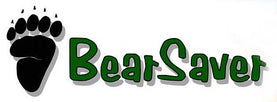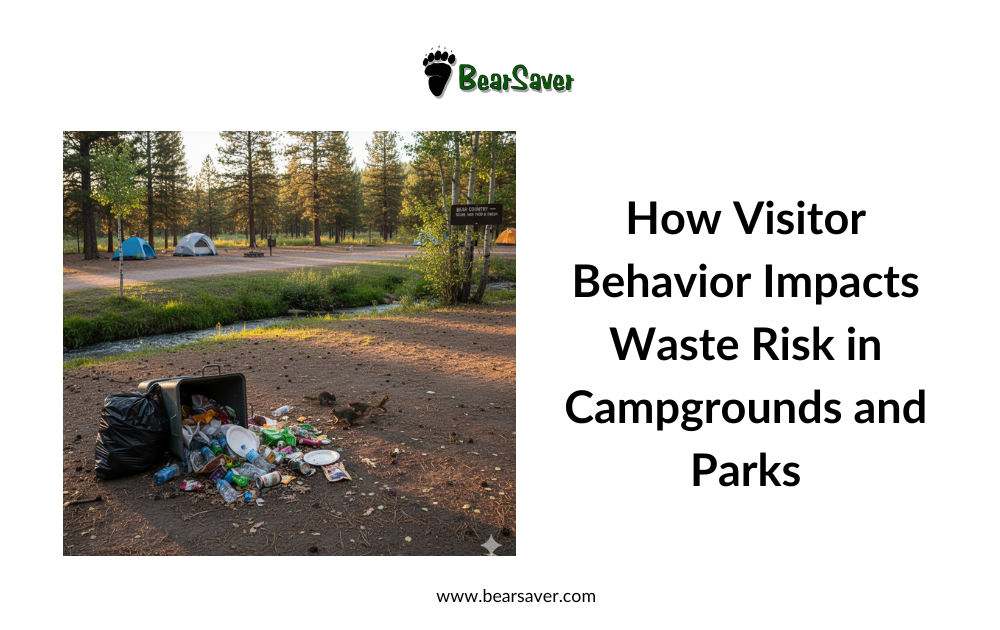How Visitor Behavior Impacts Waste Risk in Campgrounds and Parks
Posted by Securr Blogger on
Managing waste in campgrounds and parks goes far beyond maintaining a clean environment—it plays a vital role in protecting wildlife, preserving natural habitats, and ensuring visitor safety. While park agencies develop waste-management plans, visitor behavior remains the single most unpredictable factor influencing waste-related risks. The way visitors dispose of trash, handle food, or interact with wildlife can significantly affect the likelihood of animals accessing human waste.
Understanding how visitor behavior impacts waste exposure helps park managers implement practical strategies that encourage compliance, minimize wildlife conflicts, and maintain safe, enjoyable outdoor spaces.
Why Visitor Behavior Matters
1. Convenience Dictates Compliance
Visitors are much more likely to use designated waste containers when those containers are easy to find, easy to use, and large enough to accommodate peak activity levels. If receptacles are inconvenient or confusing, people may leave waste beside them or dispose of trash improperly, inadvertently attracting wildlife.
2. Misunderstanding Wildlife Capabilities
Many visitors underestimate how persistent or intelligent wildlife can be—especially species like bears, raccoons, and coyotes. Actions such as leaving a bag of trash next to a bin, propping open a lid, or assuming animals can’t access a poorly secured container can lead to dangerous wildlife-human interactions.
3. Habitual Shortcuts
Some visitors adopt shortcuts that increase waste risk: leaving food out temporarily, tossing trash into overflowing bins, or skipping the trek to a designated disposal site. Over time, these habits create predictable opportunities for wildlife to seek out human food sources.
4. Seasonal Surges in Waste Volume
High visitation periods mean higher waste production. During holidays or summer weekends, bins may fill quickly. If visitors encounter full containers and opt to leave waste outside them, animals are more likely to discover it.
Consequences of Improper Visitor Waste Behavior
1. Wildlife Habituation
When animals learn that human areas provide accessible food, they become food-conditioned. This can lead to property damage, aggressive behavior, and, in serious cases, the need to relocate or euthanize habituated animals. Visitor decisions often determine whether wildlife stays wild.
2. Health and Safety Risks
Improper disposal can attract wildlife into high-traffic areas, increasing the risk of bites, injuries, and disease transmission. Even smaller animals—raccoons, opossums, skunks—pose significant sanitation and safety concerns.
3. Environmental Damage
Scattered trash disrupts ecosystems. Animals may consume harmful materials, vegetation can be damaged by increased wildlife activity, and waterways become polluted when food waste or packaging enters the environment.
Behavior-Informed Waste-Management Strategies
Park administrators can mitigate visitor-driven waste challenges by designing systems around how people actually behave—not how they should behave.
1. Improve Accessibility and Ease of Use
Waste stations should be highly visible, appropriately spaced, and simple for all visitors to operate. The easier the disposal experience, the more likely visitors are to comply.
2. Expand Capacity to Prevent Overflow
Ample capacity is crucial during peak periods. Oversized or multi-compartment containers help prevent overflow—the condition most often responsible for wildlife gaining access to trash.
3. Provide Education and Reminders
Clear signage, informational displays, and ranger communication help visitors understand their role in wildlife protection and the importance of responsible waste behavior.
4. Use Durable, Animal-Resistant Infrastructure
Even with good signage, compliance varies. The strongest safeguard is using waste systems designed to withstand visitor misuse and wildlife attempts.
Highlight: BearSaver HA2-CH Double Trash Enclosure (Wide Loading Chutes, ADA Compliant)
While this article focuses on visitor behavior, it’s worth noting that infrastructure plays a key supporting role. Animal-resistant containers help ensure that even when visitor behavior isn’t perfect, wildlife remains protected.
One example used in parks and campgrounds across the country is the BearSaver HA2-CH, a double trash enclosure featuring wide, ADA-compliant loading chutes designed for ease of use. Its reinforced, animal-resistant engineering helps prevent wildlife intrusion even when visitors fail to latch or fully close the chute. The dual compartments also provide increased capacity to handle high-traffic areas.
How Parks Can Encourage Better Visitor Behavior
-
Place waste stations in intuitive, high-visibility locations.
-
Pair educational messaging with physical examples of proper waste handling.
-
Ensure trash infrastructure supports high-volume usage.
-
Regularly monitor and empty containers during busy seasons.
-
Offer wildlife-safety education at camp check-in stations.
By building systems that complement natural visitor tendencies and incorporating durable, wildlife-resistant equipment, parks reduce the risk of wildlife conflicts and help maintain cleaner, safer recreational spaces.
Protecting Wildlife Starts with Supporting Visitors
Visitors don’t always behave perfectly, but with the right design, infrastructure, and communication, parks can significantly reduce waste-related risks. Animal-proof systems like the BearSaver HA2-CH support responsible waste management by reinforcing safety, even when human behavior is less predictable.
For more information or a customized waste-management recommendation, contact BearSaver:
📞 800.851.3887
✉️ sales@bearsaver.com
🌐 BearSaver.com

